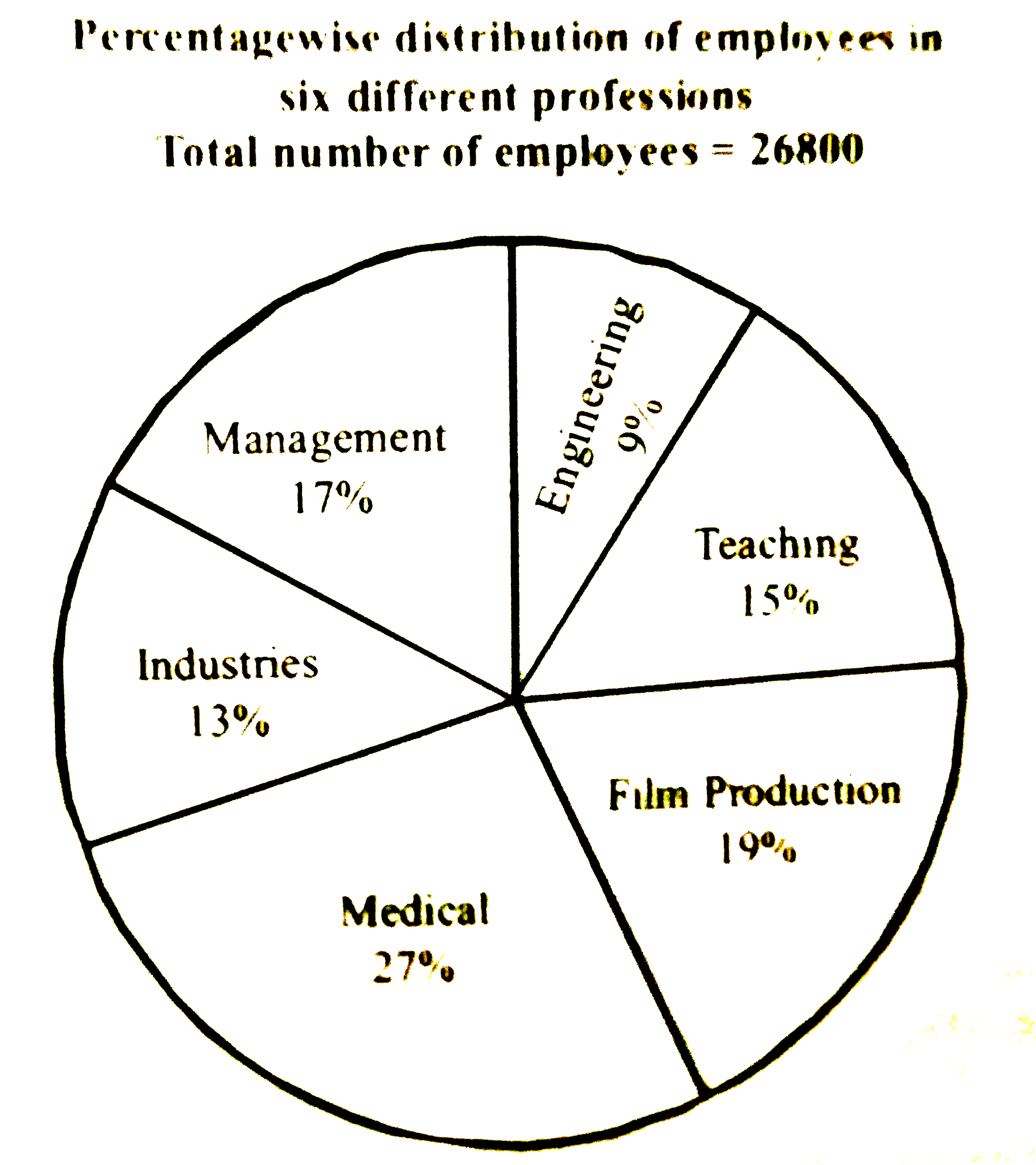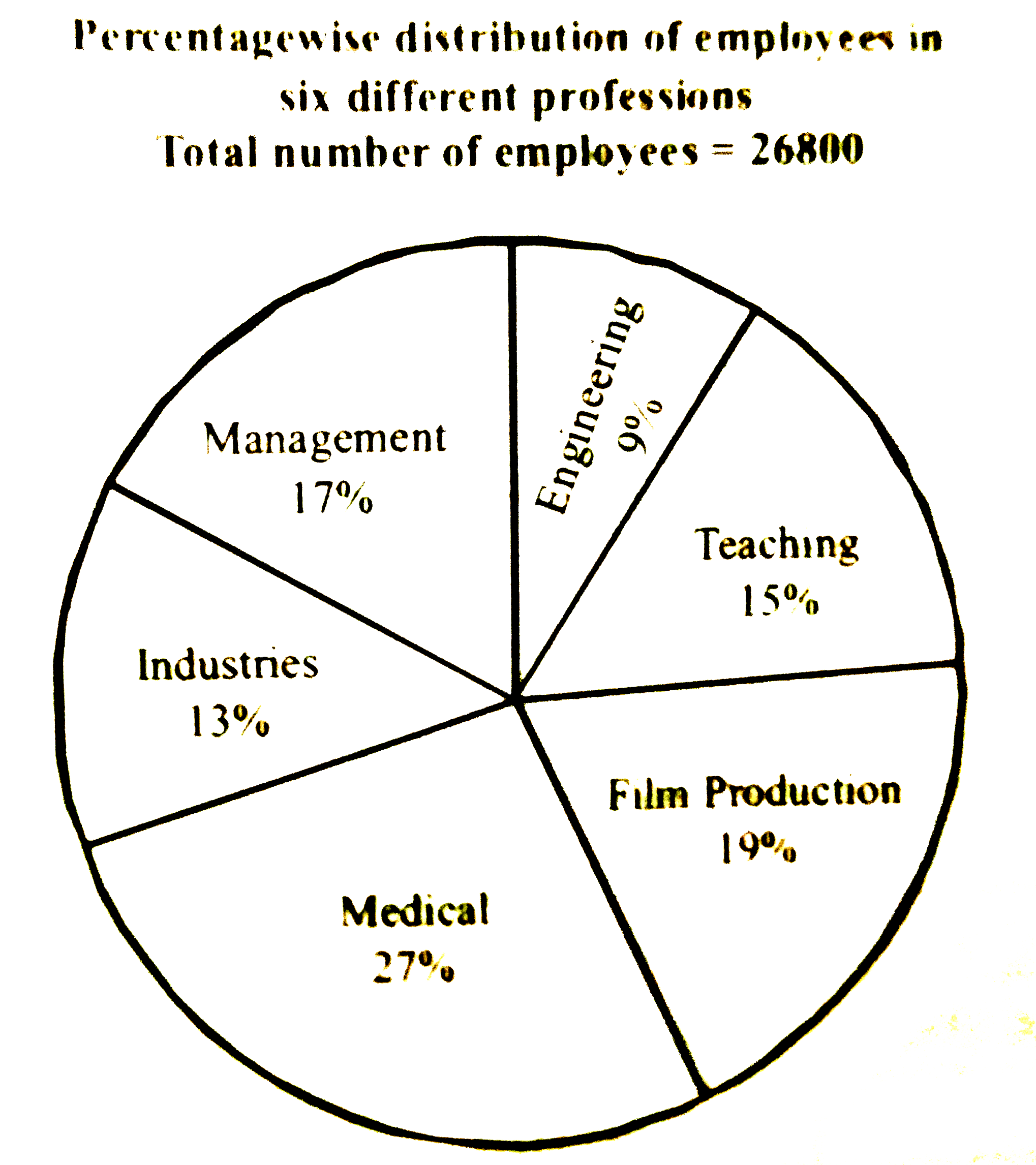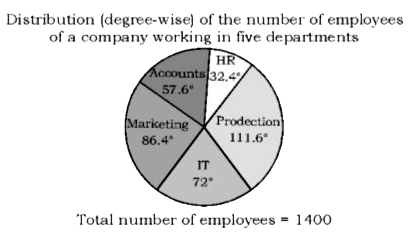
25% of employees from film production profession went on a strike. What is the number of employees from film production who have not participated in the strike ?
a) 3271
b) 3819
c) 3948
d) 1237
The correct Answer is:B
In film production employees on strike =25%
No. of employees not in the strike =75%
∴ No. of employees not in strike
=26800×19100×75100=3819
Topper's Solved these Questions
Similar Questions

What is the total number of employees in engineering profession and industries together ?View SolutionBreakup of number of employes working in different departments of an organisation, the number of males and the number of employees who recently got promoted.
Total number of employees =3,600
Employees working in different departments



What is the total number of females working in the production and Marketing departments together ?View Solution
Knowledge Check
- Question 1 - Select One
In my office there are 30% female employees and 30% of these earn greater than Rs. 8,000 per month and 80% male employees earn less than Rs. 8,000 per month. What is the percentage of employees who earn more than Rs. 8,000 per month ?
A30%B23%C60%DCan't be determined - Question 2 - Select One
Study the following table chart carefully and answer the questions below:
The chart shows the number of employees in various departments in 5 companies.

Find the average number of employees from the technical department hired by all companies taken together.A201B205C102D202 - Question 3 - Select One
In the following questions, two statements are given, followed by two conclusions I and II. You have to consider the statements to be true even if they seem to be at variance from commonly known facts. You have to decide which of the given conclusions, if any, follow from the given statements.
Statements:
(1) 60% of the government employees went on strike.
(2) Mr. Gopal is a government employee.
Conclusions:
I. Mr. Gopal went on strike.
II. Mr. Gopal did not participate in the strike.AOnly conclusion I followsBOnly conclusion II followsCBoth conclusions I and II followDEither conclusion I or II follows

The number of men working in the production department of the organisation forms what per cent of the total number of employees working in that department ?View Solution
In magagement profession three-fourth of the number of emplyees are female. What is the number of male employees in management profession ?View SolutionStudy the pie chart and answer the question

The total number of employees working in production and IT department exceeded the total number of employees working in the marketing and accounts department byView SolutionIn an office , out of 3000 employees the manager classifies his employees on the basis of sincerity , experience and productive . Out of these 550 employees are sincere only , 320 employees are experienced and 350 employees are productive . 420 employess are both sincere and experenced 450 employees are both experienced and productive and 600 employees are both sincere and procuctive . Also , 400 employees are sincere , exprienced and productive. Find the numbers of employees who are either sincere or experienced or productive.
View Solution52% students from a college participated in a survey. What is the respective ratio between the number of students who did not participate in the survey to the number of students who participated ?
View Solution

